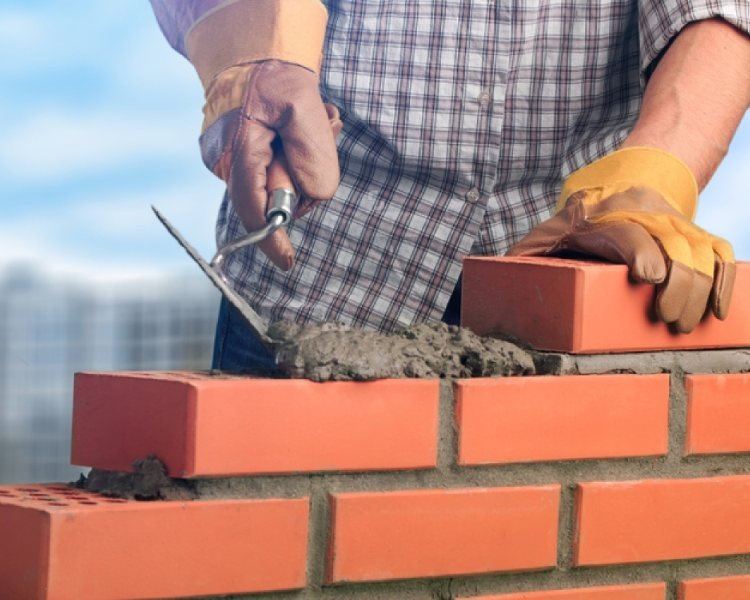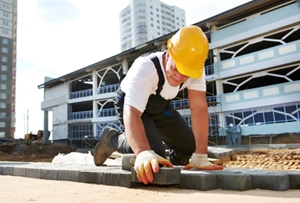Dependable Tuckpointing Services for Fixing Block and Rock Surfaces
Dependable Tuckpointing Services for Fixing Block and Rock Surfaces
Blog Article
Opening the Secrets of Sustainable Stonework Building And Construction Practices for Eco-Friendly Buildings
Amongst the myriad methods to eco-friendly building, sustainable masonry construction stands out as a time-tested and long lasting method that holds a riches of untapped potential. From the option of materials to ingenious construction strategies, the tricks to attaining sustainability within stonework building are multifaceted and appealing.
Advantages of Sustainable Stonework Building
Accepting lasting masonry building and construction practices not only reduces environmental influence but additionally offers long-lasting financial benefits to builders and areas. By utilizing products like recycled bricks, obstructs, and stones, builders can substantially decrease the carbon impact of their tasks while promoting source effectiveness. In addition, lasting stonework building methods, such as correct insulation and thermal mass homes, can enhance energy performance within buildings, leading to reduced functional expenses over time.
Moreover, the longevity and strength of stonework frameworks add to long-term financial benefits. Buildings constructed utilizing sustainable masonry techniques often require less maintenance and repair service, translating to cost financial savings for home builders and property proprietors. The long life of masonry products additionally makes sure that structures stay stable and secure, reducing the need for constant renovations or substitutes.
Eco-Friendly Masonry Materials
Using environmentally friendly masonry materials is a critical action in the direction of boosting the sustainability of building techniques and lessening environmental influence while making best use of lasting economic advantages. Sustainable stonework materials are sourced, generated, and used in a way that reduces general ecological impact. Lasting concrete obstructs include recycled accumulations and may feature improved insulation buildings, contributing to energy performance in structures.
Additionally, natural materials like adobe, rammed earth, and straw bundles give superb thermal mass homes, lowering the requirement for home heating and cooling down energy. These materials are often locally readily available, promoting regional economic climates and lowering transportation-related carbon discharges. By choosing green stonework products, building jobs can significantly decrease their ecological impact and add to the development of much healthier, a lot more lasting constructed settings.
Energy-Efficient Stonework Techniques
Energy performance plays an important function in enhancing the sustainability of stonework building methods. By applying energy-efficient masonry methods, builders can significantly decrease the general power intake of a building, leading to reduced operational expenses and a smaller sized environmental footprint. One vital energy-efficient masonry method is the usage of thermal mass, which involves including thick products like concrete or brick into the building's structure to soak up and keep warm. This assists control indoor temperatures, minimizing the requirement for mechanical heating and cooling down systems.

Advancements in Lasting Masonry
Recent innovations in sustainable stonework practices have caused ingenious methods that are improving the building and construction sector. One such advancement is the development of self-healing concrete, which makes use of bacteria installed within the concrete to heal fractures autonomously. This advancement not only reduces upkeep costs but also boosts the toughness of masonry structures, contributing to their sustainability.
Another noteworthy technology is the usage of recycled accumulations in stonework building - masonry contractor. By integrating materials such as smashed ceramic waste or recycled glass right into concrete mixes, home builders can lower the ecological effect of building and construction tasks while keeping architectural honesty. This method not just draws away waste from land fills however also saves natural deposits, making it a vital improvement in lasting masonry building
Moreover, the combination of electronic style devices, such as Structure Details Modeling (BIM), is changing the means stonework structures are planned and built. BIM enables even more specific computations, lowered product wastefulness, and boosted energy efficiency, inevitably bring about more lasting building methods. These technologies jointly represent an encouraging future for lasting stonework building and construction in the era of green structures.
Future Trends in Stonework Sustainability
With the cutting-edge strides made in lasting stonework methods, the future patterns in stonework sustainability are poised to further reinvent the construction patio installation market. One of the key patterns shaping the future of stonework sustainability is the enhanced integration of technology. Advancements such as Structure Details Modeling (BIM) and digital truth simulations are being utilized to optimize masonry construction procedures, leading to minimized product waste and boosted energy efficiency in structures.
Additionally, the advancement of unique lasting products is readied to play a substantial role in boosting the eco-friendliness of masonry construction. masonry contractor. Technologies like self-healing concrete, recycled accumulations, and bio-based binders are gaining grip for their capacity to lessen environmental influence while maintaining architectural honesty

Final Thought
In verdict, sustainable masonry building methods offer numerous advantages for environmentally friendly structures. masonry contractor. Technologies in sustainable stonework are continually being developed to even more enhance the environmental efficiency of buildings.
Report this page